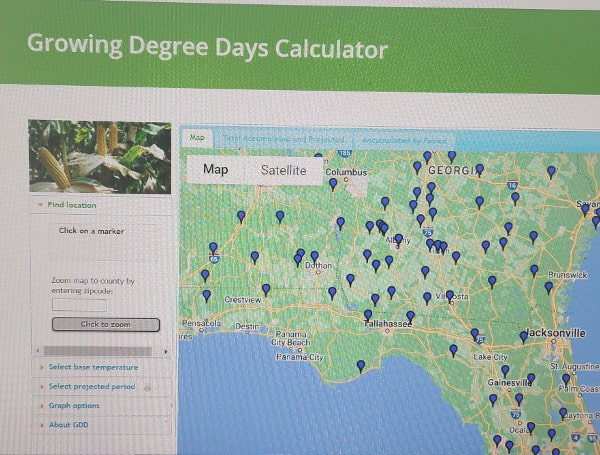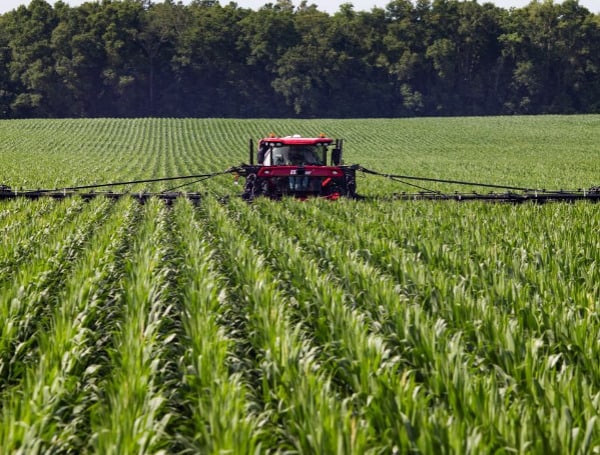A new University of Florida-developed web-based tool will help growers reduce risks that come with climate variability.
It’s called the “climate indicators tool,” the newest addition to AgroClimate, a web-based platform designed 15 years ago by Clyde Fraisse, a UF/IFAS professor of agricultural and biological engineering.
Growers can use the new tool to track weather conditions and indicators in places where there isn’t a weather station in the vicinity of their farm, Fraisse said. It’s designed to help agricultural producers in Florida and around the world.
Read: Florida Ag Commissioner Simpson Announces Preservation Of Over 100,000 Acres Of Agricultural Lands
“The potential impacts of weather on agriculture can be better understood when typical meteorological variables such as precipitation and temperature are translated into measures that can better help us understand the effects of climate on crop development and yield,” said Fraisse, lead author of a new Ask IFAS document on the climate indicators tool.

Among other things, the tool tracks:
- Growing-degree days, also called “heat units.” These are based on the fact that a plant develops only when the average temperature exceeds a base temperature. This can help growers track if crops are developing faster or slower and when certain critical development phases are reached.
- Chill accumulation – Plants need cool temperatures when they’re dormant in the winter so they can resume normal growth in the spring. Scientists call this exposure a “chilling accumulation requirement.”
- Temperature-humidity index – the combination of air temperature and humidity that can help quantify heat stress in livestock.
Read: Agritourism In Florida: Exploring The Ultimate Farm Experience And Sunshine State Agriculture
The module can also tell users about climate anomalies, such as the fact that daily minimum temperatures in Florida have been above normal during the last eight to 10 years — a trend that most likely will lower the yield of certain crops.
Additionally, the new tool lets growers track current weather conditions up to the previous day and also compare current observations — for instance, amount of rainfall in the last 15 days — to the historical observations for the same period during the last 40 years.
The climate indicators tool is the latest addition to AgroClimate.
Among other things, AgroClimate hosts disease-alert systems for strawberries, blueberries and citrus. The systems tell growers when to take action to control diseases or updates about stress indicators.
Also on AgroClimate, you can find seasonal forecasts and educational materials about the effects of the El Niño Southern Oscillation on Florida weather patterns and information about how growers can become more resilient to extreme weather events.
Thousands of people already use AgroClimate. Specifically, it gets about 40,000 to 50,000 page views annually, although it’s difficult to estimate to many of those are agricultural producers, Fraisse said.
“The most popular tools on AgroClimate are the strawberry and blueberry advisory systems as well as tools like chill accumulation and growing-degree day calculators,” he said.
Help support the Tampa Free Press by making any small donation by clicking here.
Android Users, Click To Download The Tampa Free Press App And Never Miss A Story. Follow Us On Facebook and Twitter. Sign up for our free newsletter.

